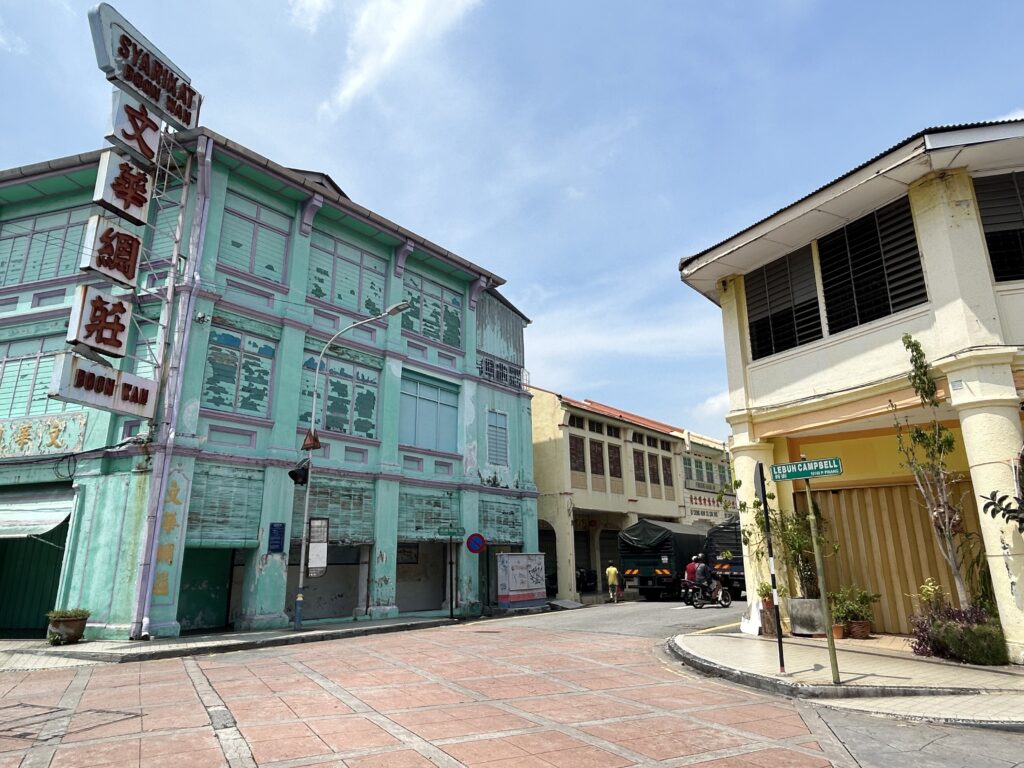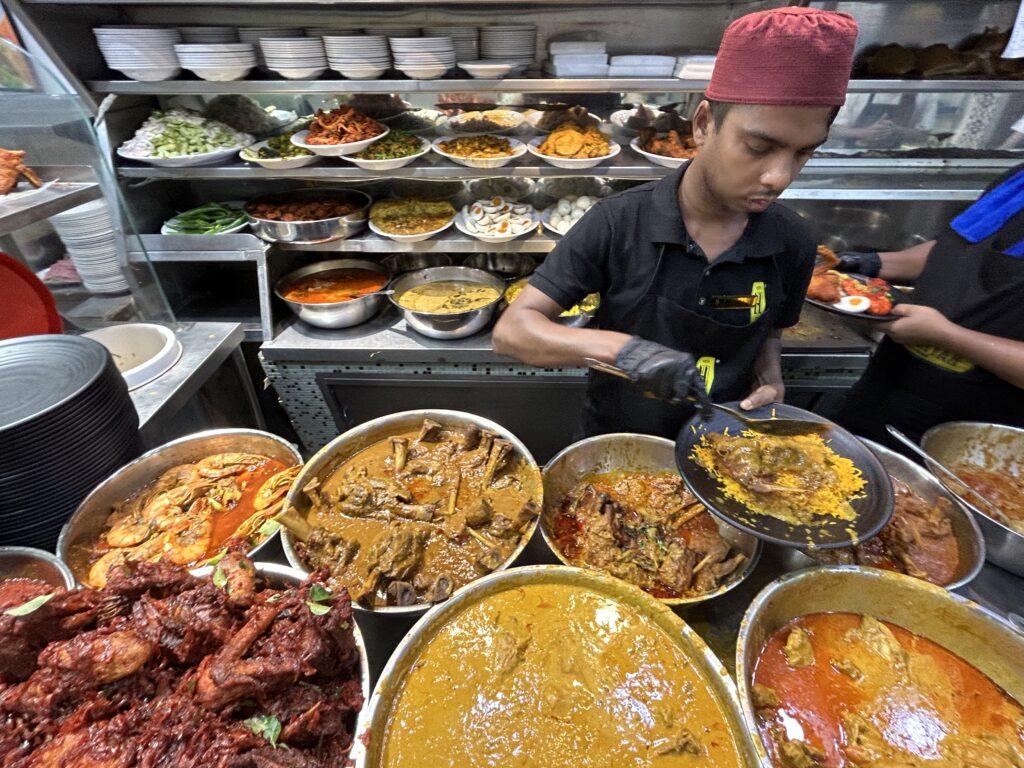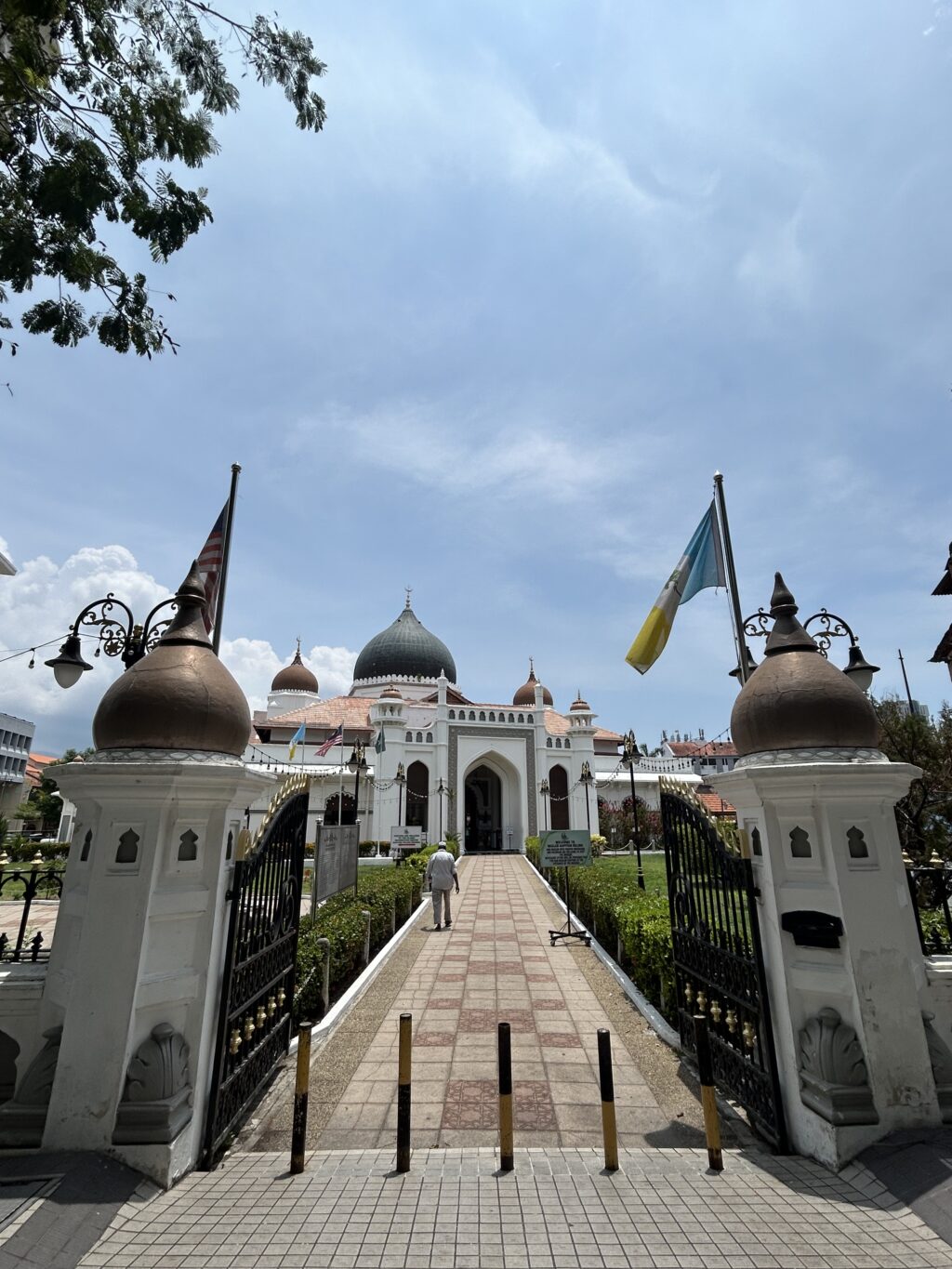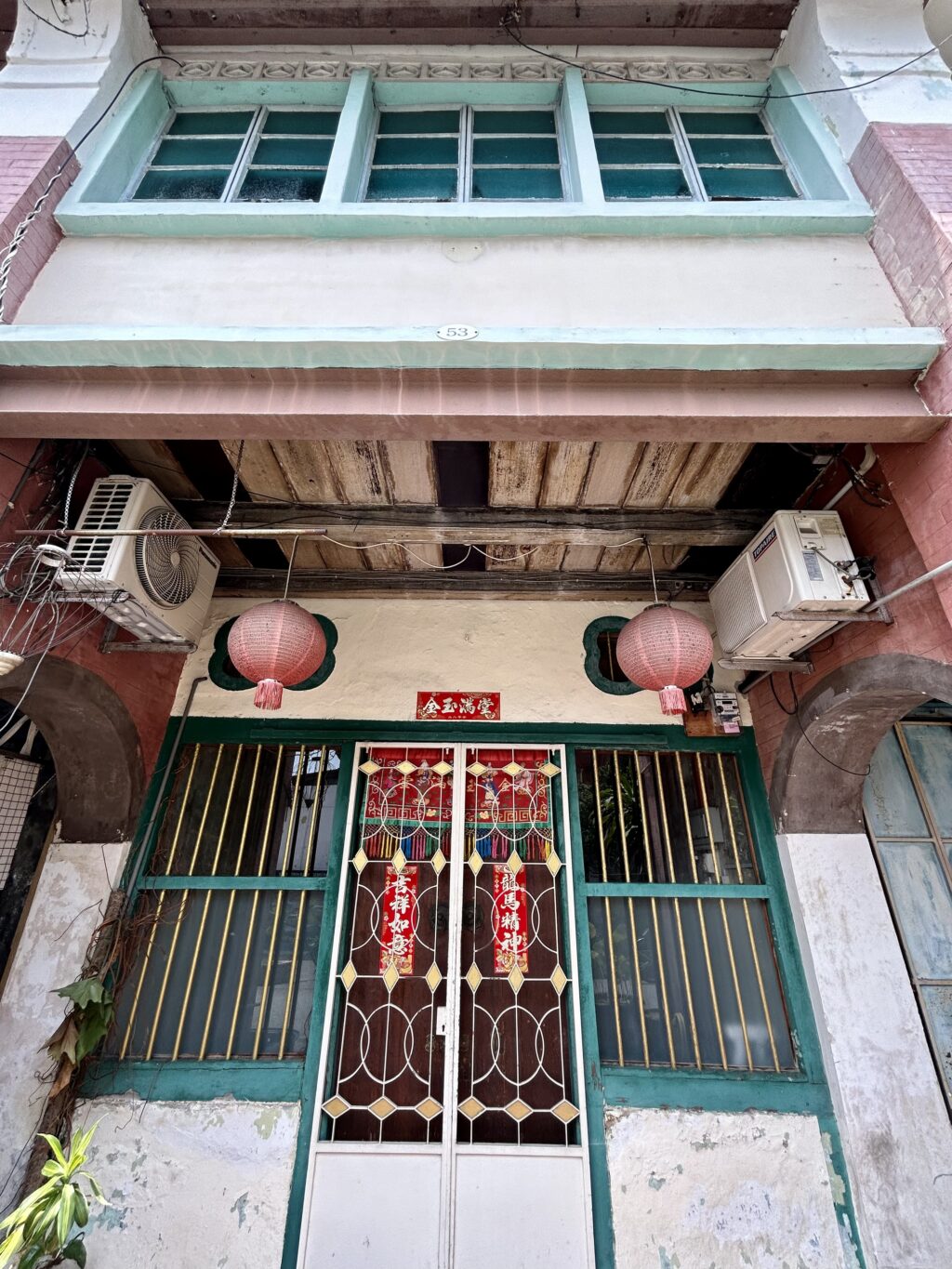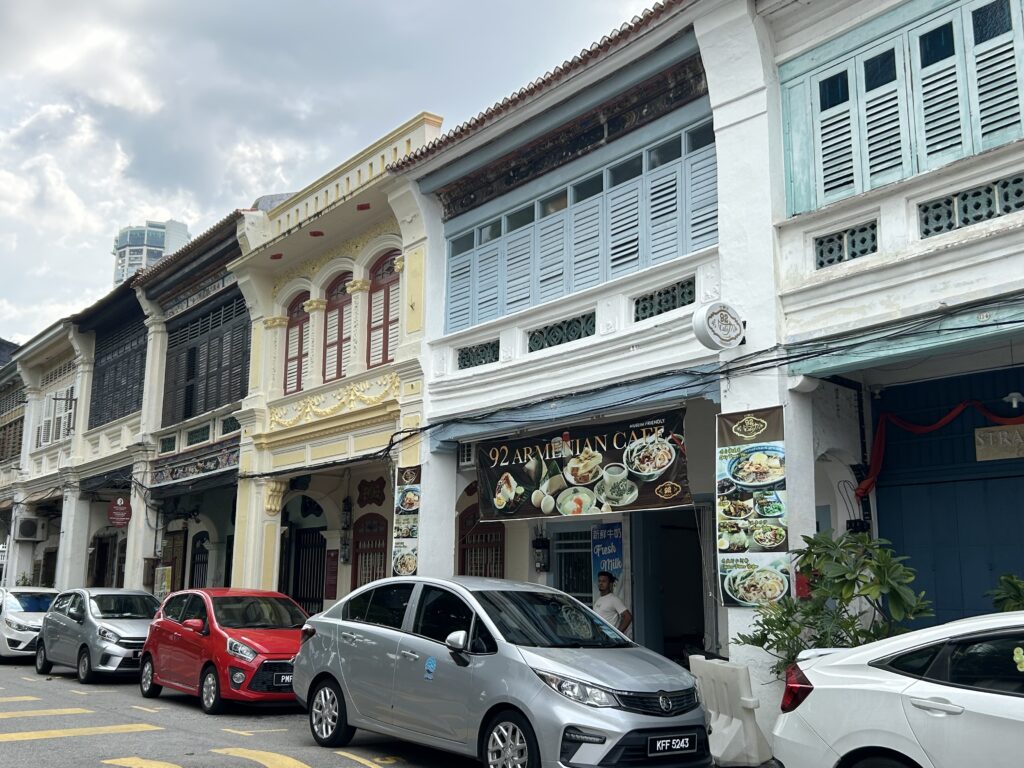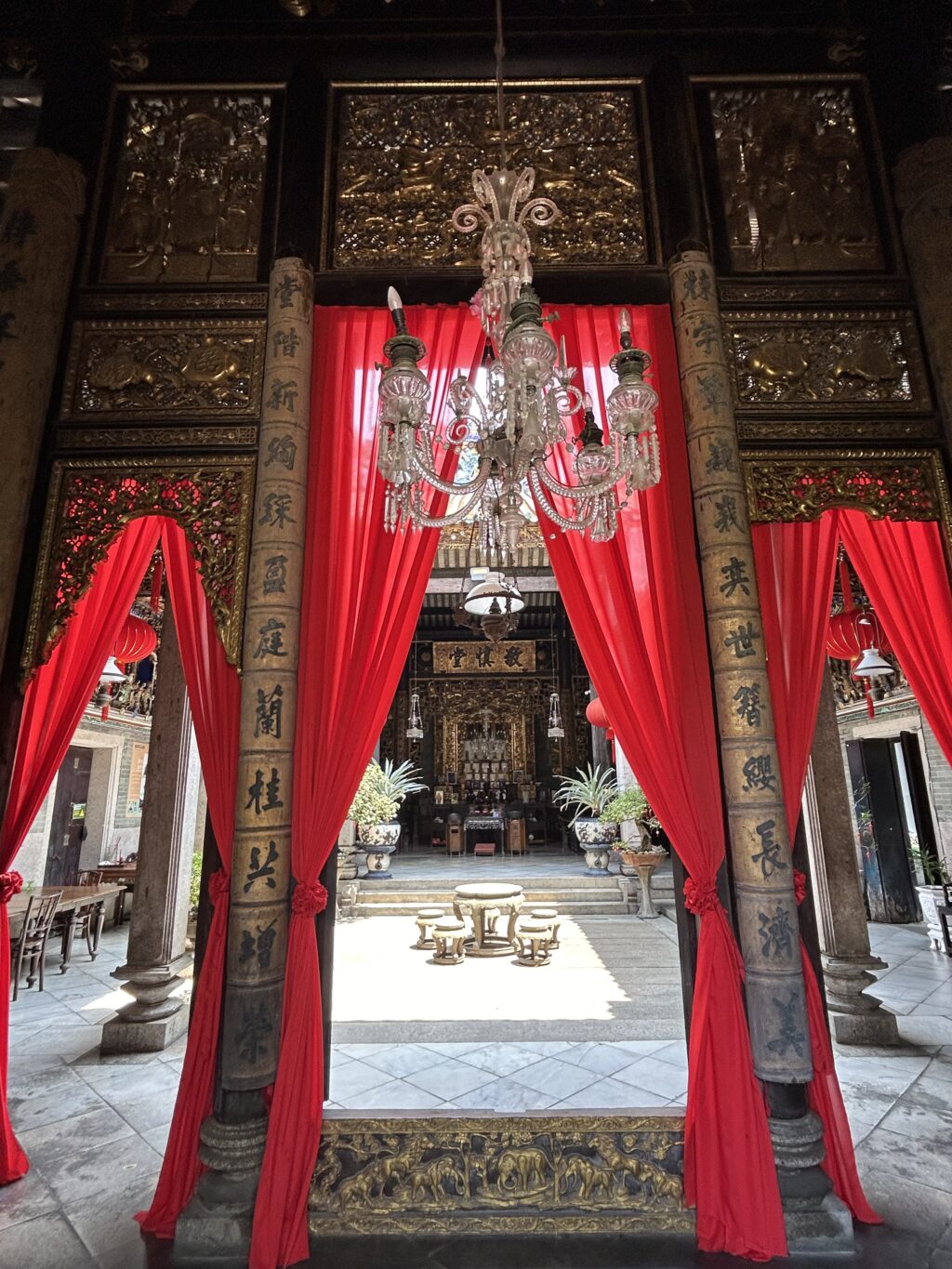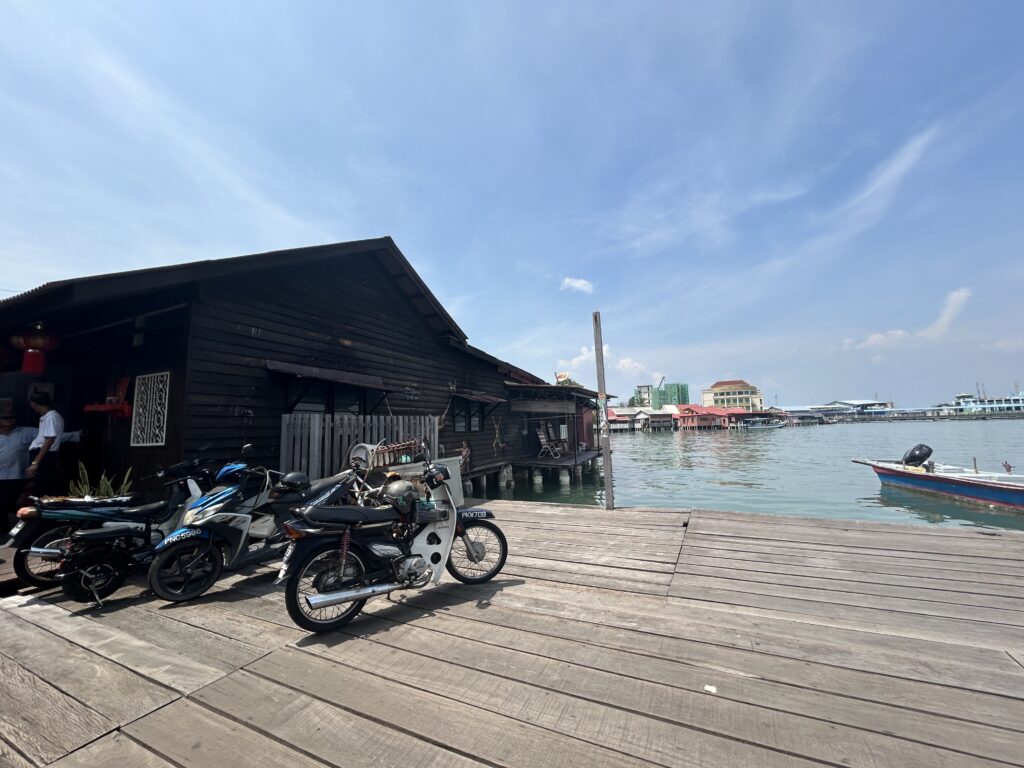GEORGE TOWN, Malaysia – From up above, Penang Island in Malaysia looked like what most modern metropolises do, with its skyscrapers illuminating the evening sky, and cars zooming along its expressways.
But as we finally made our way to George Town, and night became day, it was, to borrow one of Disney’s iconic tracks, a whole new world.
To say George Town is rich in culture and history is an understatement. Here was a city where the east literally meets the west; and where time seemed to have come to a standstill.
With its beautifully preserved Chinese shophouses, colorful Hindu temples, and towering Minarets, it was sensory overload, especially to history enthusiasts like me.
READ MORE:
The Chiang Mai experience: Up close with the gentle giants
I went to Kuala Lumpur with the AirAsia Super App, here’s how it went
Beyond Seoul: Discovering Korea’s rich culture, history
Everything about George Town – from the architecture that withstood time and food from different parts of the globe – was a feast, both for the eyes and the soul.
About George Town
Historic George Town is just one of the two cities in Malaysia that earned the coveted World Heritage Site title from the United Nations Educational, Scientific and Cultural Organization (Unesco). The other is Malacca.
The Unesco named both George Town and Malacca, also spelled as Melaka, as Historic Cities of the Straits of Malacca.
The confluence of Western and Eastern worlds in these two cities, and its preservation throughout time, resulted in what the UN body described as ‘a unique architectural and cultural townscape without parallel anywhere in East and Southeast Asia.’
And indeed, when walking in the heart of George Town under the summer sun, it truly felt like I was whisked back in time.
Campbell Street
For instance, Campbell Street, located just a few meters away from the city’s Unesco Marker, reminded me of how popular media portray old school Hollywood – with its bright-colored buildings, and its elaborate and massive neon signs.
Aside from eye-popping facades and architecture, Campbell Street is also where you can find authentic Indian Muslim food spots like Hameediyah Restaurant, the oldest restaurant in Penang that serves Nasi Kendar, a hearty meal that consists of meat (chicken or seafood), steamed rice (plain or Biryani), vegetables and a variety of gravies.
The mixture of gravy really took things to another level.
Kapitan Keling Mosque
And then at one corner of Campbell, one cannot miss the majestic Kapitan Keling Mosque, just one of the many symbols of cultural diversity in George Town. Built sometime in the 1800s, it lies at the heart of the city’s Muslim community, and today remains as the largest mosque in George Town.
According to the Islamic Tourism Centre of Malaysia, the mosque bore a mix of architectural designs, ranging from Asia’s Indian-Mughal to Europe’s Gothic, Moorish, and Roman Renaissance.
Chinese shophouses
And then of course, there are the thousands of Chinese shophouses lining the streets all over George Town.
The shophouses in the Malay Peninsula – not only those found in George Town but other cities like Kuala Lumpur and Singapore – are unique in such a way that you cannot find similar designs elsewhere, with their butterfly vents, intricate details including geometrical and floral patterns, symmetrical designs, arched pathways, and a dash of feng shui inspiration.
By definition, a shophouse is a type of building that both serves as residential and commercial – with the living quarters situated usually on the second floor.
Until now, several of these shophouses in George Town still function this way, albeit in a rather slightly different style. For example, a coffee shop on the ground floor and a break room for staff on the upper ones.
Some shophouses in the city have also been converted to boutique shops and hotels, offering guests the experience to live in one. Of course, I did not pass up this opportunity to actually stay in one.
We found this quaint hotel called Kelantan House along Jalan Kelantan, in a nice quiet little area in George Town. Despite being surrounded by modern residential houses, including an imposing high-rise, the property stands out – thanks to its beautifully preserved facade.
Inside, it features an indoor courtyard and a skylight – two of the many interesting characteristics of the shophouses found in the Straits. Scattered around the hotel are also photos of George Town’s colonial era, and short, descriptive accounts of the city’s colorful past, particularly the Peranakan Chinese culture.
Speaking of Peranakan culture, George Town is also home to maybe one of the most opulent museums I’ve been to – the Peranakan Mansion.
Peranakan Mansion
Housing hundreds of treasures, including artifacts, priced paintings and even jewelry, from the Malay Peninsula’s colorful past, it’s nothing short of extravagant. Think of Crazy, Rich, Asians set in the 18th and 19th centuries.
Inside the museum is also another experience that takes you back in time.
The green-colored mansion along George Town’s Church Street was once the home of Chung Keng Quee, considered one of Penang’s wealthiest individuals in the 19th century. In the 1900s, following Keng Quee’s death, it almost fell into dereliction until renovation works in the 1990s restored it to its former glory.
The entire property pays homage to the colorful culture and traditions of the Peranakan Chinese or also referred to as the Straits Chinese. Having settled in colonial cities like George Town, Malacca and Singapore, they are known for their lifestyle – a unique blend of Western and Eastern influences.

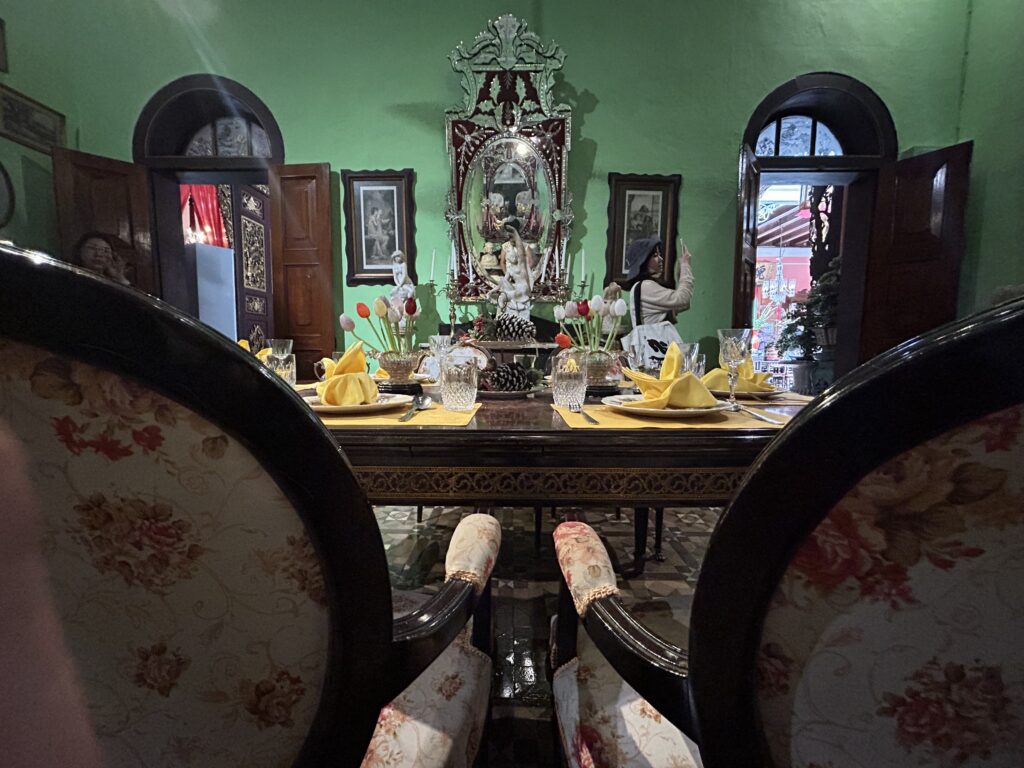
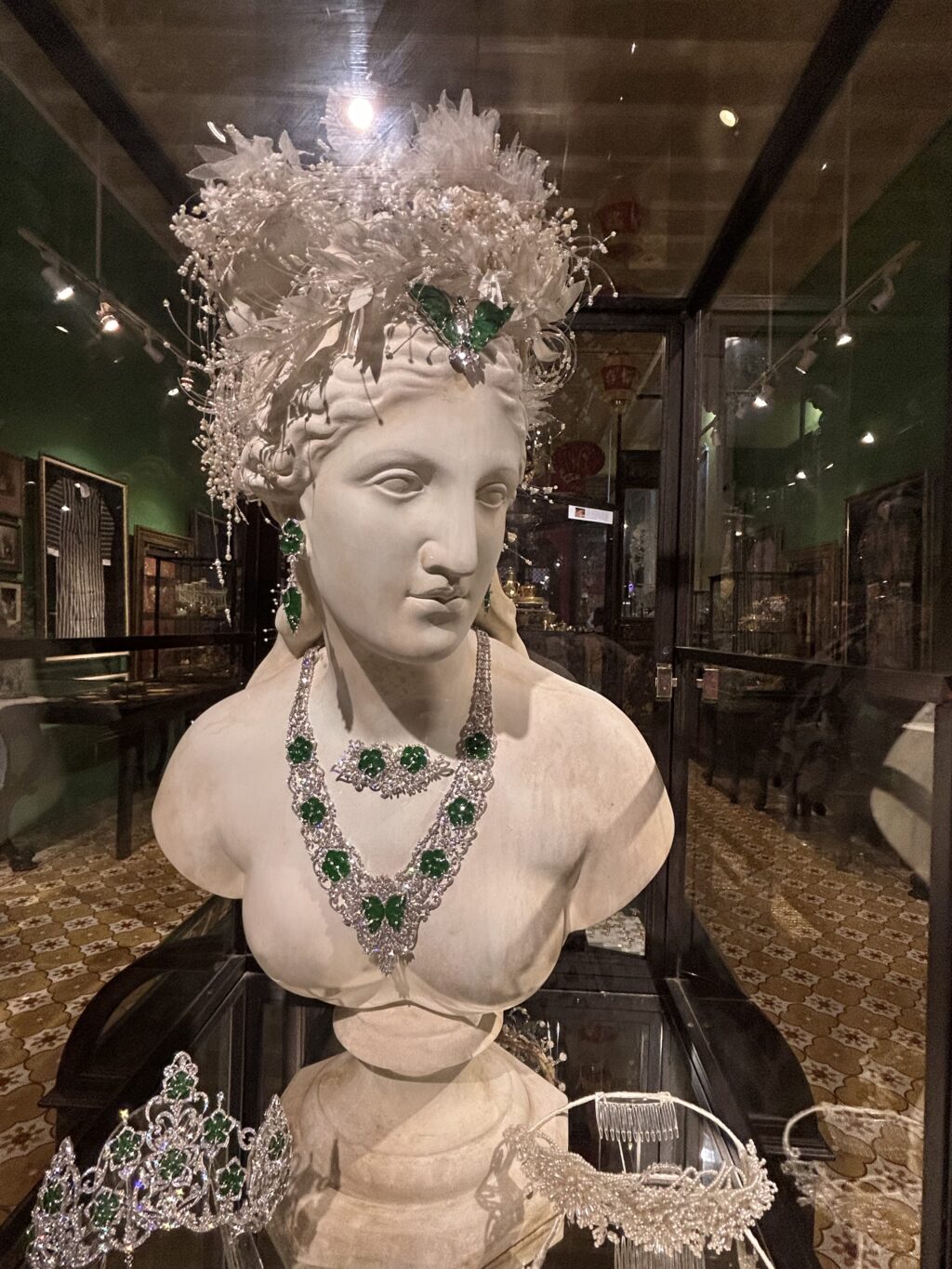
The Peranakan culture is nothing I’ve ever seen – from how they dress to their wedding customs, which includes the groom unveiling his bride waiting on a four-poster bed, behind thick drapes lined with intricate details, usually in red and gold.
The Clan Jetties
As a port city, George Town’s rich heritage is also evident on its coasts, like the Clan Jetties, which is just a walking distance from the Peranakan Mansion. The Clan Jetties is the term used to describe the families residing in George Town’s floating villages.
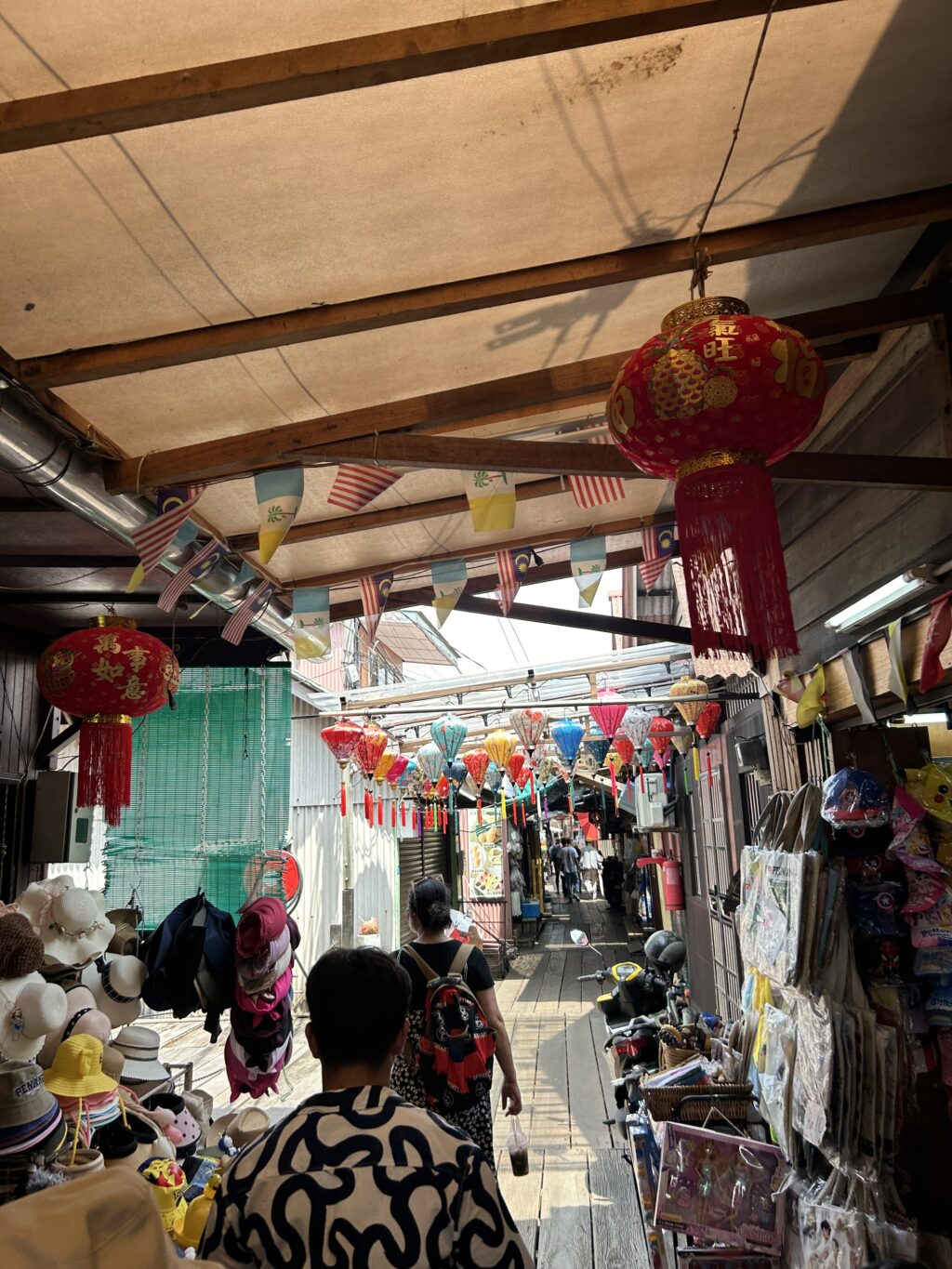
Like a city within a city, you can find temples, shops, restaurants and even schools here.
Modern George Town
Aside from its heritage and history, George Town’s modern scene also has something to boast – its iconic street art. Apparently, there are more than 50 of them spread all over the city, and locating each and every one of them is akin to treasure hunting – in a delightful and fulfilling way.
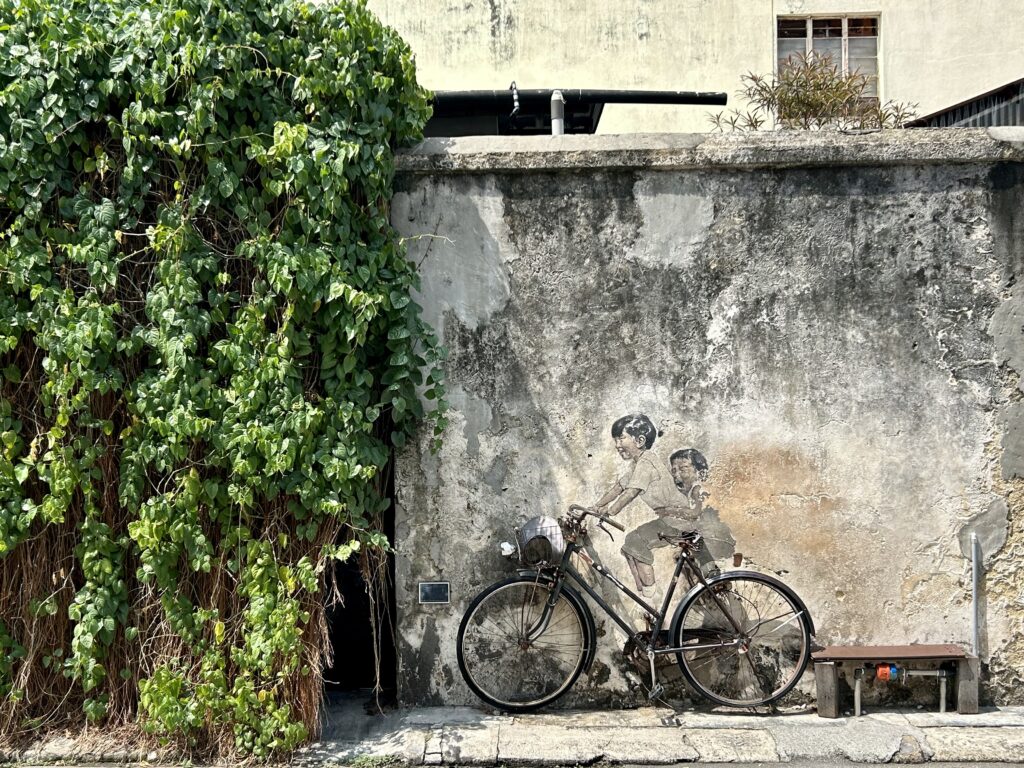
Getting There
Penang Island is located in the northwest side of Malaysia. By land, it is an approximately six hour bus trip from Kuala Lumpur, the country’s capital; four by train. Flights from Kuala Lumpur International Airport can also be a good option too, especially for those trying to squeeze in as much time in their trip to George Town. Air travel from Kuala Lumpur takes between 40 minutes to an hour.
As of this writing, there are no direct flights between Cebu and Penang Island. But you can fly to Singapore and from there, catch another flight bound to Penang – which was the route I took. Alternatively, you can fly directly to Kuala Lumpur via Manila, and then jump on the next flight to Penang.
READ: IATA: Asia-Pacific sees strong demand in air travel this year





